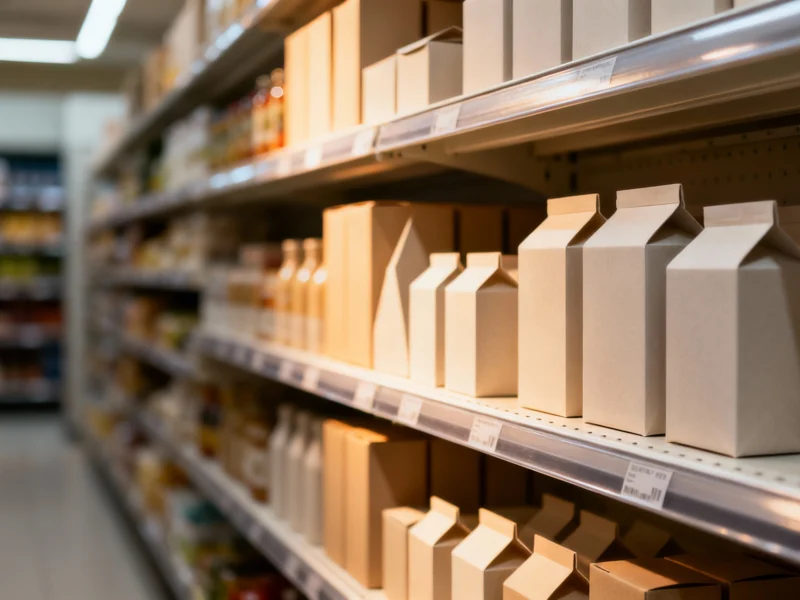Amazon has launched Amazon Grocery, a new private-label brand featuring over 1,000 products with most items priced under $5. The comprehensive line combines the company’s Amazon Fresh and Happy Belly brands into a single grocery essentials collection available online and at Amazon Fresh stores. This strategic move positions Amazon to compete directly with Walmart’s Great Value and Target’s Favorite Day brands during a period of heightened consumer price sensitivity.
Strategic Expansion in Competitive Grocery Market
Amazon’s new grocery brand represents the company’s latest effort to capture market share in the highly competitive $1.3 trillion U.S. grocery industry. The launch consolidates multiple private-label lines under one umbrella brand, creating a more cohesive shopping experience for customers. According to Jason Buechel, Vice President of Amazon Worldwide Grocery Stores and CEO at Whole Foods Market, the brand addresses current economic pressures facing consumers while maintaining quality standards.
“During a time when consumers are particularly price-conscious, Amazon Grocery delivers more than 1,000 quality grocery items across all categories that don’t compromise on quality or taste,” Buechel stated in the official announcement. The brand spans fresh produce, meat, seafood, dairy, pantry staples, and snacks, with new additions including fresh bakery cinnamon rolls, refrigerated pizza dough, and bottled spring water. This expansion follows Amazon’s private-label momentum that saw customers purchasing 15% more private-brand products in 2024 compared to the previous year.
Product Range and Competitive Positioning
The Amazon Grocery lineup covers essential food categories with an emphasis on affordability and convenience. Core offerings include milk, olive oil, fresh produce, meat, and seafood, with most items carrying price tags under $5. The company plans to expand the selection in coming months with frozen pasta meals, pie fillings, granola, sliced loaf cakes, and additional deli meat options. This comprehensive approach allows Amazon to compete across multiple price points and product categories simultaneously.
Industry analysts note that private-label brands typically offer higher profit margins for retailers while providing cost savings for consumers. According to Food Marketing Institute data, private brands now account for approximately 18% of dollar sales in U.S. supermarkets. Amazon’s aggressive pricing strategy directly challenges established value brands from competitors, particularly as food inflation remains a concern for American households. The company’s existing distribution network and technological infrastructure provide significant advantages in scaling the new brand efficiently.
Integration with Amazon’s Broader Grocery Strategy
The Amazon Grocery launch represents another piece in the company’s comprehensive grocery ecosystem, which includes Whole Foods Market, Amazon Fresh stores, and online grocery delivery. Last month, Amazon expanded its Same-Day Delivery service to include perishable grocery items across 1,000 U.S. cities, enabling customers to receive fresh produce, dairy, meat, and baked goods within hours of ordering. This infrastructure investment creates multiple touchpoints for the new private-label brand to reach consumers.
Amazon’s grocery strategy has evolved significantly since its acquisition of Whole Foods Market in 2017 for $13.7 billion. The company has since experimented with various store formats and private-label approaches, including last year’s launch of the “Amazon Saver” brand for budget-friendly canned goods and condiments. According to Statista research, Amazon currently holds approximately 3% of the U.S. grocery market, with room for significant growth in the coming years.
Market Impact and Future Outlook
Amazon’s entry into the value grocery segment signals intensified competition in an already crowded market. Traditional grocery chains and mass merchants are likely to respond with enhanced private-label offerings and more aggressive pricing strategies. The move also reflects broader industry trends toward private-label expansion, with IRI research showing that private-brand dollar sales grew 7.5% in 2024 while unit sales increased 2.3%.
For consumers, the Amazon Grocery brand provides additional options during a period of economic uncertainty. The company’s scale and technological capabilities could potentially drive down prices across the grocery sector, benefiting shoppers regardless of where they choose to purchase groceries. As Amazon continues to refine its grocery approach, industry watchers expect further innovations in private-label development, store formats, and delivery options that could reshape how Americans shop for food in the coming decade.



